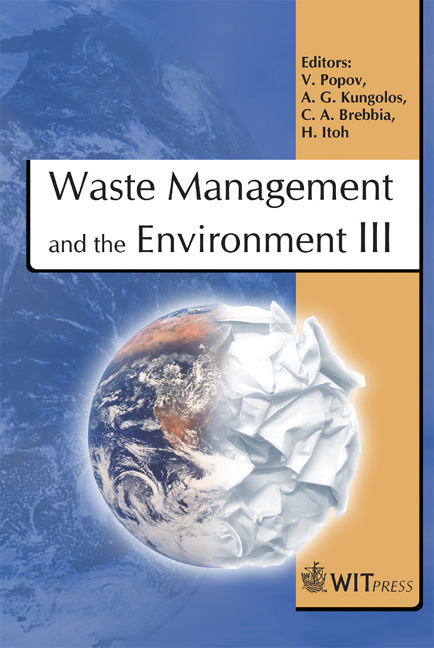Resource Recovery From Wastewater Containing Hazardous Oxoanions By Hydrothermal Mineralization
Price
Free (open access)
Transaction
Volume
92
Pages
10
Published
2006
Size
943 kb
Paper DOI
10.2495/WM060221
Copyright
WIT Press
Author(s)
T. Itakura, R. Sasai & H. Itoh
Abstract
We developed a new treatment method for wastewater containing various harmful ions such as arsenite, arsenate, boric, fluoride and fluoroboric ions by hydrothermal mineralization using Ca(OH)2 as a mineralizer. As a result, complete recovery of these ions was attained regardless of the initial concentration and oxidation number of these harmful ion species in wastewater. Therefore, the present hydrothermal treatment using Ca(OH)2 mineralizer is recommended as one of the most effective techniques to remove these ions from wastewater and recover them as recyclable resource. Keywords: hydrothermal mineralization, arsenite, arsenate, recovery. 1 Introduction Various oxoanions such as arsenite and boric acid have high toxicity against human health and the environment. They are important resource, however, for plating or advanced material manufacturing industries, from which the wastewater containing these oxoanions is generated everyday. Several methods to remove them have been already reported by using adsorption, electrocoagulation, membrane and biological techniques [1–5]. But, these methods have the following problems. (1) Removal yield is low. (2) The applicable concentration range is narrow. In addition, used adsorbent or collected residues are still hazardous wastes, so that they must be treated by proper method, though it is very difficult to convert them to recyclable resource in various industries. These problems are caused by the difficulty to recover these oxoanions as stable
Keywords
hydrothermal mineralization, arsenite, arsenate, recovery.





